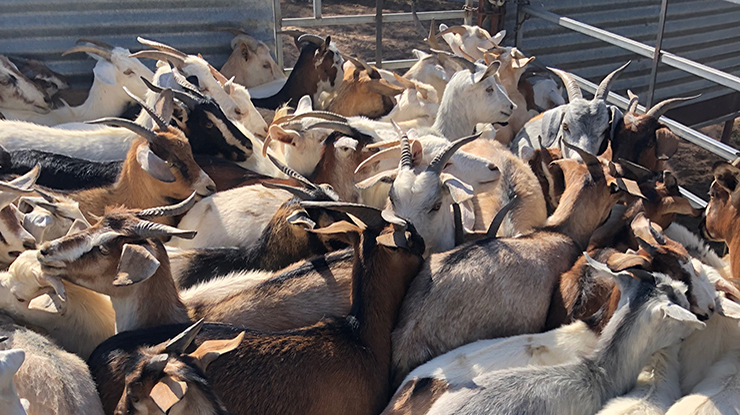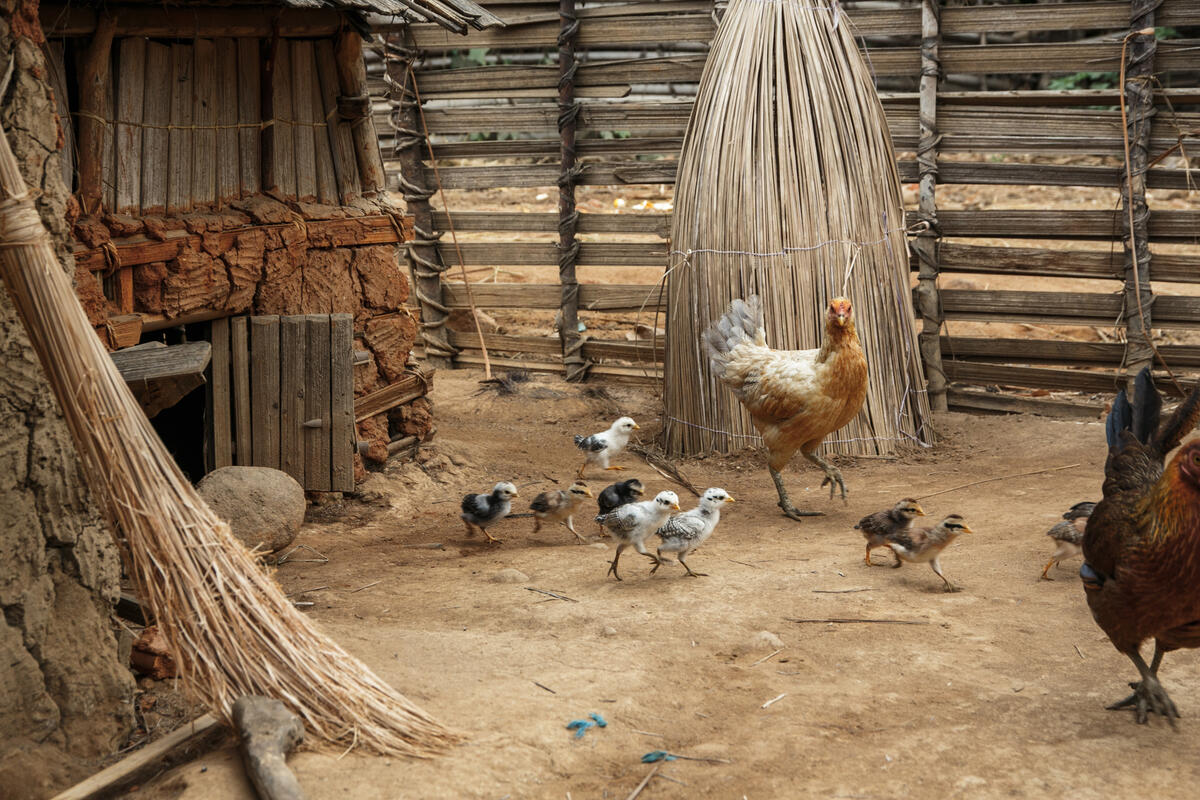 Rangeland goats, Photo: Eliza Fessey
Rangeland goats, Photo: Eliza Fessey
Key points:
- Existing small ruminant enterprises in the semiarid rangelands of Queensland are profitable and resilient alternatives to beef cattle enterprises.
- For existing sheep and goat enterprises, the operating profit and return on capital were very good based on the expected future commodity prices that were estimated in 2019.
- Changing from a predominantly beef enterprise to rangeland meat goat production substantially improved the long-term operating profit of the property despite increasing financial risk and indebtedness.
Self-replacing rangeland meat goat enterprises in the semiarid rangelands of Queensland are profitable and resilient alternatives to beef cattle enterprises, new research has found.
An assessment of the profitability of a range of different livestock enterprises in the semiarid rangelands of northern Australia found self-replacing rangeland meat goat enterprises produced the second greatest rate of return on total capital per annum (3.7%), only just below self-replacing meat sheep (3.9%).
Alternative enterprises including steer finishing, self-replacing beef cattle herds, self-replacing Merino wool flocks, and a wether wool production enterprise, produced lower returns.
Facing high climate variability and periods of severe drought, a research project undertaken in 2019 by Dr Maree Bowen and Fred Chudleigh from the Department of Agriculture and Fisheries (Queensland), assessed from a whole-of-property level, how livestock operations in the semiarid rangelands of northern Australia could build resilience and profitability through diversification into alternative livestock enterprises.
The profitability of beef cattle, wool sheep, meat sheep and meat goat enterprises were first each assessed in a steady-state analysis using herd or flock budgeting models for a constructed property, representative of the central-western Queensland rangelands, based off forecasted prices made in 2019.
Dr Bowen said researchers worked with different businesses in the region to assess the economic benefit of diversifying income streams or changing enterprises.
“After establishing a property representative of the central-western Queensland rangelands and conducting steady-state analyses for existing enterprises, we applied partial discounted cash-flow budgets to consider the value of integrating or fully adopting a change in enterprise over time,” Dr Bowen said.
“We found that existing small ruminant enterprises in the semiarid rangelands of Queensland are profitable and resilient alternatives, based on contemporary prices.
“But when making a change to an alternative enterprise there were several costs that needed to be considered during this process, from wild dog exclusion fencing to the on-farm infrastructure needed to convert the operation. It was this additional investment that increased the financial risk and indebtedness of the overall enterprise, even when looking at cases like rangeland meat goats where the property profit could be substantially improved by an extra $45,700 per year with a change from beef to goat production,” Dr Bowen said.
Dr Bowen said the operating profit and return on capital were very good for existing sheep and goat enterprises based on the predicted future prices that were estimated in 2019.
“For goats, there has been a relative increase in meat price over the years, and we found that the average husbandry costs of managing self-replacing rangeland meat goats is around $0.56/head per annum which is relatively low compared to other enterprises and part of their profitability story,” Dr Bowen said.
“The rangeland meat goat herd received basic levels of management input which meant that weaner bucks were not castrated but were separated until sale, and weaner does were separated from bucks until yearling mating.
“In this region, there is a lot of interest in rangeland goat production, and in small ruminants more generally. This direct interest from local producers is what led to us to assessing the value of adding other small ruminants like rangeland goat operations.
“Through the research, we found that existing rangeland meat goat production systems typically work on fairly minimum management to achieve a successful system. This is an area that could be explored in further research; looking at how to best manage adding goats to an enterprise whilst assessing the costs of establishing a mixed operation and potential returns.
“However, our analysis found a low sensitivity of operating profit to changes in key production parameters like growth, weaning and mortality rates, which indicates that researchers and producers will need to look for low-cost strategies to increase production. It is important to remember that achieving an increase in production does not always result in a profitable outcome at the property level.
“The results from our analyses are a guide and give insights using locally relevant data and long-term price expectations, however individualised economic analyses should ideally be conducted to give insights based on each manager’s own circumstances, expectations and available resources, to support decision making,” Dr Bowen said.







